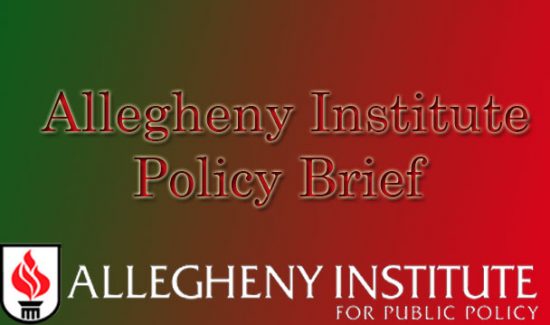America’s Sick Public Sector
The economic statistics are widely reported. The private sector of America’s still-fragile economy is recovering, albeit slowly. The still-volatile stock market is near post-recession highs, with the Dow almost doubling since Obama took office. Economic growth, still far from robust, bobbed along at 2.2% in the last quarter, the eleventh consecutive positive quarter since early 2009. To be sure, these are not boom times, and many believe private sector recovery should be even more robust by now.
Still, the often-prescient consumer confidence index is flashing optimism for 2013 and beyond. Almost six in ten Americans predict "economic conditions will be good" a year from now while almost two in three believe they personally will be "better off this time next year."
Moreover, while unemployment nationally still hovers at 8.1%, jobs are being created. Some 111 million people are working in the private sector—actually more than when Obama took office in 2009. There are even signs that manufacturing may be staging a comeback.
Nevertheless, about seven in ten Americans still rate the current economy as poor, and a majority believe they are worse off now than a year ago. Moreover, while unemployment is coming down, it’s doing so sluggishly. Some 16 million remain unemployed. If the economy is improving, why doesn’t it feel that way?
It doesn’t because there is more than one economy: the private sector, where optimism prevails, and the public sector, where gloom and doom still presides. That public sector of our mixed economy is not insignificant; it accounts for more than 35% of GDP, and it is still struggling. Indeed, compared to the private sector, it is sick.
Unemployment in the public sector is reaching epidemic levels. At least 500,000 jobs, mostly in state and local governments, have been lost since Obama was inaugurated. Some estimate the national unemployment rate might be in the six percent range if public sector losses were not counted.
Nor are stresses on the public sector likely to end soon. Recently, the respected federal Government Accountability Office characterized conditions as actually worsening. The GAO estimated the states would have to cut expenditures almost 13% or raise taxes a similar amount just to balance their current budgets. California alone is now projecting a budget deficit of $16 billion.
While this ongoing public sector fiscal crisis is well known, its causes are not well understood. What exactly is making the public sector sick?
There is not a simple answer to this question. Nevertheless, lying underneath the public sector’s malaise is a single factor all too familiar to many Americans today: money.
Our state and local governments don’t have enough income to cover their expenditures. Unlike the federal government, most state and local constitutions forbid borrowing to cover deficits. Unlike some private citizens, state and local governments cannot just reach for the credit card. Instead, they must balance income and expenditures (i.e., the budget) every year.
This problem is not a new one. State and local taxes, by nature, are business cycle taxes (sales taxes, property taxes, etc.). Revenues from them tend to decline in bad times and increase in good times. So stretching back to the early 20th century, after every business cycle, state and local governments simply raised taxes when the coffers ran low. Voters didn’t always like it, politicians didn’t always support it, but one way or another, states almost always did it.
But not this time!
This time state after state declined to pass significant tax hikes. Similarly, at the local government level, property tax proposals met fierce resistance. Voters collectively and conclusively have echoed H.W. Bush’s famous (and famously regretted) words: "Read my lips, no new taxes."
The consequence is that state governments must cut jobs, expenditures, and programs to balance their budgets. Until the new business cycle again produces adequate revenue, state and local governments will continue to be a drag on economic recovery.
How serious a drag remains to be seen. Some economists, however, believe the recovery may be delayed a year or longer. Others believe a double-dip recession is possible if the recovery remains as slow as it has been.
What can be done to fix the problem? Certainly massive federal aid is one obvious option. But in the present political and fiscal environment, with its concern for federal spending, major federal intervention seems unlikely. The states could always raise taxes. And there is some evidence that state cuts may have gone as far as they can without significant backlash. Consequently, some state action to restore cuts or even raise taxes shouldn’t be ruled out.
The most likely outcome, however, is a continuation of current conditions. State and local governments could prolong a period of slow or negative growth as the nation emerges from its most significant economic downturn in almost a century.
For good or ill, a smaller public sector seems an all but certain legacy of the Great Recession.
Copyright © 2012 G. Terry Madonna and Michael L. Young, All rights reserved
Our mailing address is:
Center for Politics and Public Affairs
415 Harrisburg Ave
Lancaster, PA 17603




